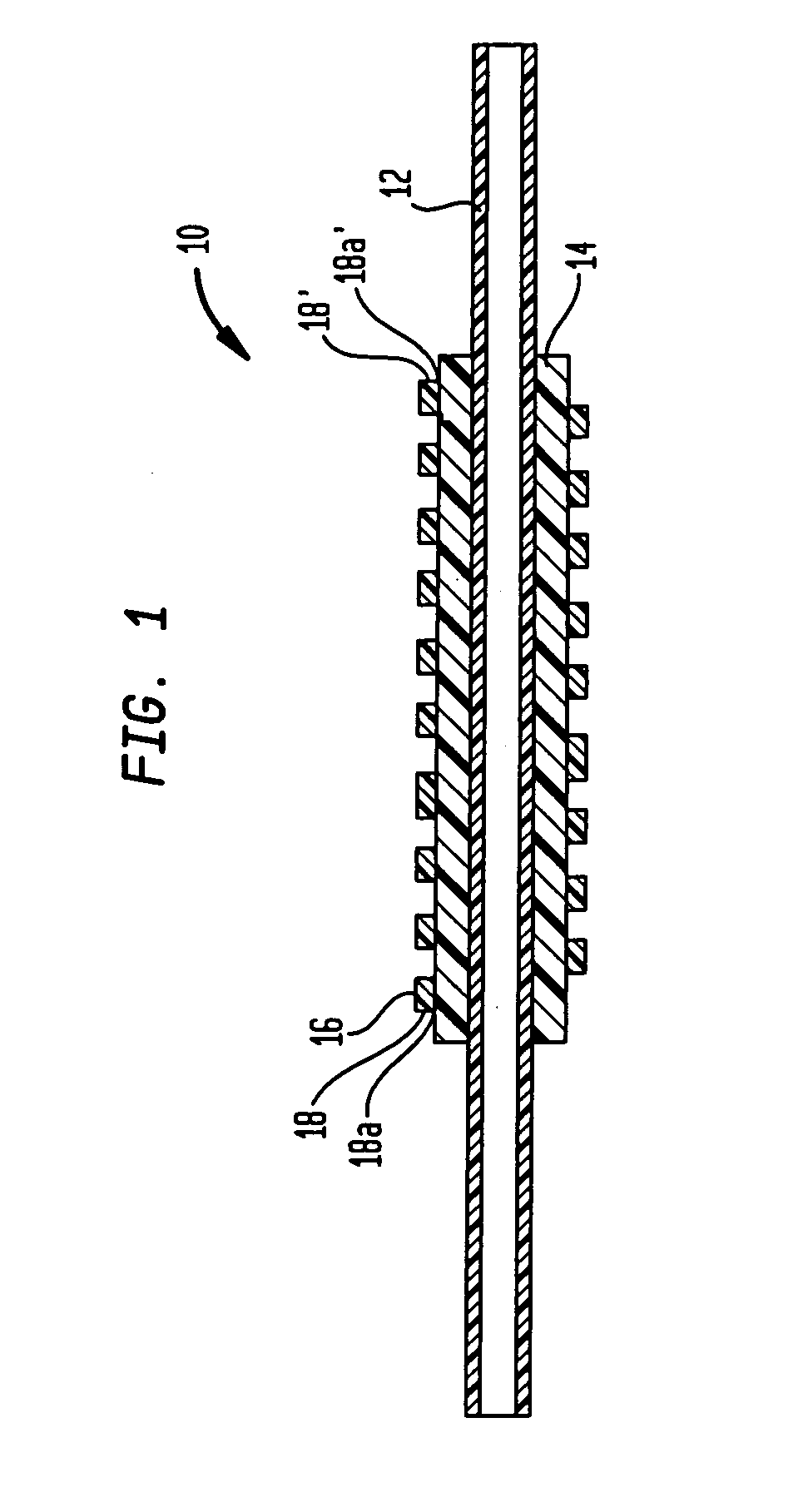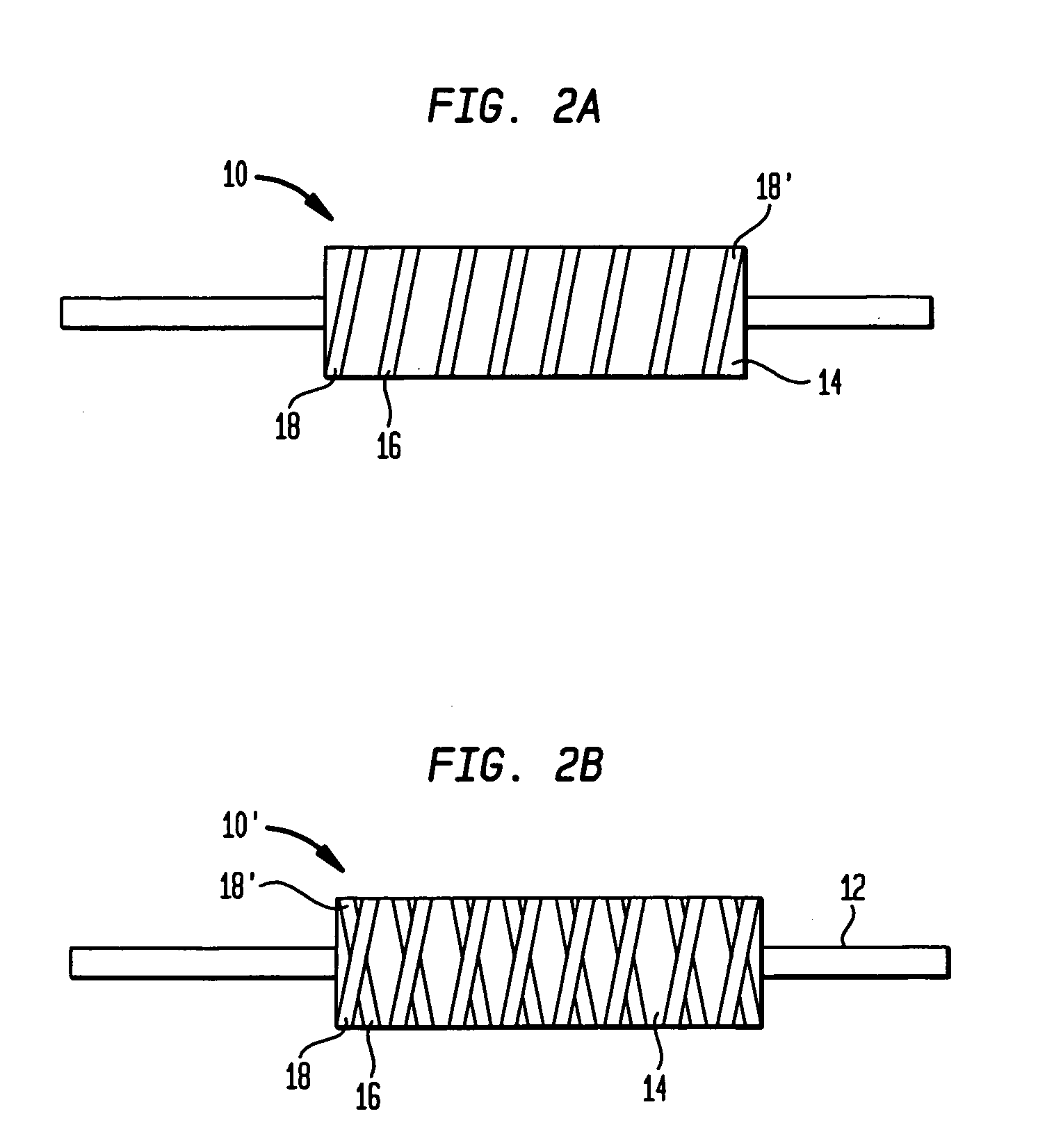Self-sealing vascular graft
a vascular graft and self-sealing technology, which is applied in the field of self-sealing vascular grafts, can solve the problems of grafts not being reliable long-term patency solutions, the risk of undermining the veins of patients, and the leakage of punctures in such tubing under the pressure of the circulatory system, so as to improve the leakage resistance of the access element, and improve the leakage resistan
- Summary
- Abstract
- Description
- Claims
- Application Information
AI Technical Summary
Benefits of technology
Problems solved by technology
Method used
Image
Examples
third embodiment
[0025]FIG. 3 illustrates an artificial graft 20 in accordance with the present invention. This embodiment is similar to embodiments 10 and 10′ in FIGS. 1, 2A and 2B except that an outer covering 22 is provided over compression element 16 in the structures. In FIG. 3, those elements which are identical to elements in FIG. 1 have been indicated with the same reference numbers.
[0026] Preferably, the covering 22 is made of platinum-cured silicone gum or a liquid silicone with a durometer hardness of 20-35 Shore A (NuSil MED-4035 or equivalent). This material is compression molded on the structure after compression element 16 has been secured, in a manner similar to access element 14. In the preferred embodiment, covering 22 has a wall thickness of about 0.25 to about 0.5 mm. It is also preferred that cover 22 have an exterior surface #45 “texturing”(Charmilles Technologies, VDI 3400), or a micro-porosity (50 to 200 microns) providing an environment to allow for biological connective mat...
fourth embodiment
[0027]FIG. 4 illustrates an artificial graft 30 in accordance with the present invention. Graft 40 broadly comprises a base tubing element 12, a tubular access element 14 overlying the base tubing, and an outer covering 32 formed over access element 14 so as to provide radial compression to the access element. In the embodiment illustrated, the covering 32 may extend past the extent of the access element 14 and about a portion of the tubing element.
[0028] Base tubing element 12 preferably has a circular cross-section but it may have any cross-sectional shape commonly used for surgical and implantation applications. Tubing element 12 is preferably made of implant grade ePTFE tubing having an inside diameter about 6.0 mm and a wall thickness of about 0.5 mm. Preferably the graft 30 is provided in a fixed length, usually longer then required and cut by surgeon, for example to the length of base tubing element 12, which is convenient for implantation, for example about 30 cm. However tu...
PUM
 Login to View More
Login to View More Abstract
Description
Claims
Application Information
 Login to View More
Login to View More - R&D
- Intellectual Property
- Life Sciences
- Materials
- Tech Scout
- Unparalleled Data Quality
- Higher Quality Content
- 60% Fewer Hallucinations
Browse by: Latest US Patents, China's latest patents, Technical Efficacy Thesaurus, Application Domain, Technology Topic, Popular Technical Reports.
© 2025 PatSnap. All rights reserved.Legal|Privacy policy|Modern Slavery Act Transparency Statement|Sitemap|About US| Contact US: help@patsnap.com



